|
|
Source
|
|
CWGC
|
SDGW
|
Uttoxeter Advertiser
|
Other
|
|
Parents
|
Samuel Bamford
|
|
|
|
1a
|
|
Samual and Dorothy Bamford
|
|
|
|
7
|
|
S B. Bamford, J.P.
|
|
|
8b 8d
|
|
|
Samuel Brassington Bamford
|
|
|
|
|
|
Where born
|
|
|
|
|
|
|
When born
|
About 1878 (2nd Son)
|
|
|
|
1a
|
|
Where educated
|
Stonyhurst College
|
|
|
8b
|
|
|
Address
|
Eaton Lodge, Doveridge
|
|
|
8b 8d
|
2 4 9b
|
|
Alton Castle, Alton
|
|
|
|
2 4
|
|
Parents: Hawthornden Manor, Uttoxeter
|
|
|
8b
|
11
|
|
Spouse
|
Olga Daisy Beatrice Bamford
|
|
|
8d
|
2 3 9b
|
|
Children
|
Two daughters (aged 5 and 3 at the time of his death)
|
|
|
8b
|
|
|
Employment Before Joining up
|
Engineering Manager at Messrs. Bamford. He had worked there for 20 years
|
|
|
8b
|
|
|
Agricultural Engineer
|
|
|
|
9b
|
|
Where Enlisted
|
Joined Uttoxeter Territorials in 1909
|
|
|
8b
|
|
|
Regiment
|
North Staffordshire (Prince of Wales’s)
|
Yes
|
Yes
|
|
2 9b 4 7 11
|
|
Unit
|
1st/6th Bn “B” Company
|
Yes
|
Yes
|
|
11
|
|
Rank
|
Captain
|
Yes
|
Yes
|
8b
|
2 3a 4 4a 6 7 11
|
|
Temporary Captain
|
|
|
|
9b
|
|
Service Number
|
|
|
|
|
|
|
Date of Death
|
13th Oct 1915
|
Yes
|
Yes
|
|
2 4a 6 9b 11
|
|
Age at time of death
|
38
|
|
|
|
7
|
|
Where Killed or died
|
Loos - Hohenzollern Redoubt
|
|
|
8b 8d
|
3 11
|
|
How he died
|
Killed in Action
|
|
|
|
|
|
Location of Grave or Memorial
|
No known grave – he is commemorated on the Loos Memorial, Panel 103
|
Yes
|
|
|
12
|
|
War Memorial inside the Catholic Church
|
|
|
|
12
|
|
Awards
|
1915 Star Off 155 Page 10c
|
|
|
|
16
|
|
|
Victory Medal Off 155 Page 10c
|
|
|
|
16
|
|
|
British Medal Off 155 Page 10c
|
|
|
|
16
|
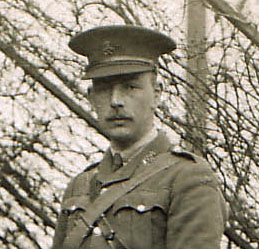
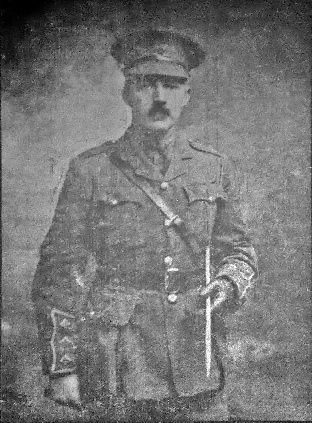
Photograph with kind permission from the Uttoxeter Advertiser
Oswald was born into a very influential and wealthy family, which went on in later years to found JCB. His parents were Samuel and Dorothy Bamford.
Oswald was the second son.
The 1881 census was taken when Oswald was just 2 or three years old. At the time, he had two brothers and the household had two servants.
Oswald and his wife and daughters lived in Eaton Lodge, near Doveridge.
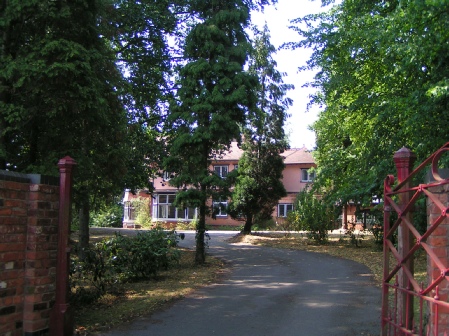
These photographs are believed to be of Oswald.
They come from the collection of material that has been preserved by William Lester Hassall’s family.
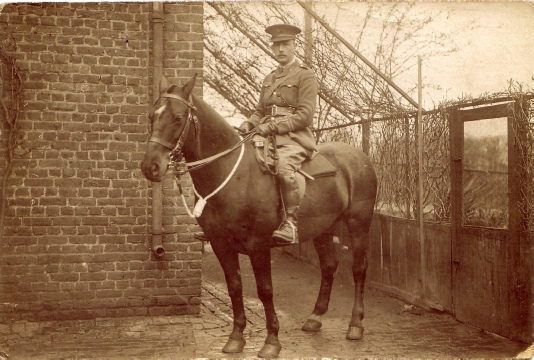
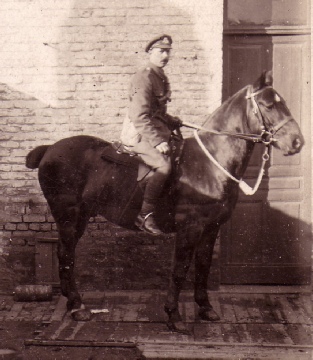
Oswald’s father, Samuel Bamford, paid for the Catholic Church in Balance Street, Uttoxeter. The family were prominent members of the congregation.
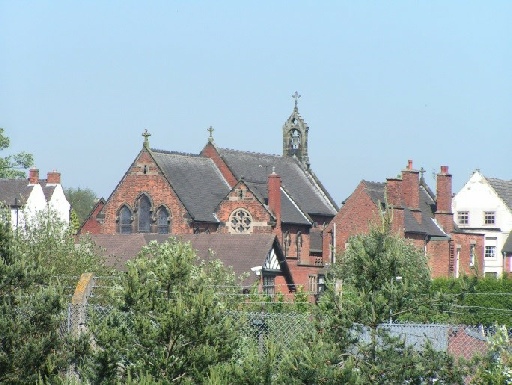
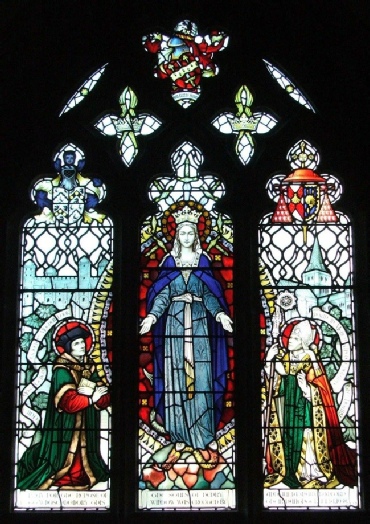
This stained-glass window, in south aisle of the church, is dedicated to members of the Bamford family, including Henry and Julian Bamford, Oswald’s brothers.
The centre panel shows St. Mary. She is flanked on either side by the two martyrs Thomas More and John Fisher.
The left-hand panel shows Thomas More, the ‘Man for all Seasons’ and Chancellor of England, and behind him can be seen the Tower of London, where both he and John Fisher were imprisoned and executed.
The right-hand window shows John Fisher, Bishop of Rochester. His cathedral church appears behind him in the window.
The following information about Oswald’s military career has been obtained from the 6th Battalion North Staffordshire Regiment (Territorial Army) History Volume 3, Appendix XX – Officers’ Names Index:
- He was first commissioned and became a 2nd Lieutenant on 1st March 1909.
- He became a lieutenant on 15th March 1913.
- The list of officers who were serving when the war started, or who rejoined immediately, includes Oswald’s name.
He joined the British Expeditionary Force (B.E.F.) with the rank of Captain on 19th October 1914
He was attached to ‘B’ Company on 31st August 1915
Oswald Bamford went to France in August 1914, when he took over the command of the local ("B") Company of the 1/6th North Staffordshire Regiment, with whom he was extremely popular. He was a Lieutenant at this time.
The SSGW database says that he was serving as a lieutenant when he left Uttoxeter with the Uttoxeter Company of the 6th North Staffordshire Regiment and was promoted to Captain on the 19th of September 1914.
He was the second son of Mr. S. B. Bamford, JP (the senior member of the firm of Messrs. Bamford) and became attached to the local company of Territorials in 1909. Through his zealous efforts, they became one of the smartest Companies in the 6th Battalion of the North Staffordshire Regiment.
Oswald was educated at Stonyhurst College, and started his commercial career in his father's company in 1896, where he devoted his energies to building the business up in co-operation with other members of the family. He was practical and thorough in his undertakings and took an active interest in the management of the works, particularly the engineering branch.
He was gazetted Captain about twelve months before his death.
On the 27th October 1915 the Uttoxeter Advertiser published an obituary for Herbert Richardson, which mentioned Oswald:
“It is significant of the present Titanic struggle that both employer and employee should be found fighting side-by-side – and falling together. The military training had greatly developed and bronzed young Richardson, and a few months ago, writing home from the base, where he was invalided for a little while, he related that one day when passing an officer’s tent he saluted the occupant, who evidently did not recognise him. Coming forward, however, the officer asked affably, “Who are you?” and receiving the reply, “Bert Richardson”, he said, “What! – not Richardson from the office!”.
“Yes, sir.”.
“Well, you have altered!” said the officer. It was Captain O. J. Bamford, who was then on his way to the trenches. Little did either of them then think that a few weeks hence they would both lay down their lives together in the field of honour.”
Oswald died at the Hohenzollern Redoubt, where he led the charge that was met with by ‘fearful rifle and machine-gun fire’. A few minutes before the time for the attack to commence he was standing, watch in hand, shouting, "Steady lads! Keep calm!"
Exactly at the appointed hour the advance began across the open, the men moving as if on parade. The forward movement was well-maintained, although men were falling fast for the first 500 yards, when Captain Bamford fell. He was last heard shouting, "Come on, lads!".
In his obituary, the Uttoxeter Advertiser quoted from a letter which Lieutenant Colonel Ratcliff had written to Oswald’s father:
“I deeply regret to have to convey to you sad news. You will have heard of the heavy fighting going on…
Our troops have been heavily engaged, and I am grieved to say that poor Oswald was one of the killed….
Oswald was a brave and plucky officer, and did his duty really well. We had to advance against German trenches, and were met with a fearful rifle and machine-gun fire, which laid low so many of our local boys. May I offer my deepest sympathy to you all?”
When he fell in action, James Perkin Fradley rushed to his aid, exposing himself to the machine-gun fire, and died in the attempt to rescue him. Please refer to James’s entry for details.
News of Oswald’s death cast quite a gloom over the whole of the Bamford works.
He left a widow and two daughters aged just 5 and 3.
A special service was held in his memory in the Catholic Church in Balance Street on 27th October, and this was described in detail in an article in the Uttoxeter Advertiser.
A large congregation attended Oswald’s memorial service and the church was crowded. He had been a prominent member and his father had paid for the church. Oswald and his brother had also paid for a beautiful mosaic altar there.
A catafalque was arranged at the altar rails, and the altar was draped with the Union Jack, on which rested his cap and sword. A solemn dirge also added solemnity to the occasion.
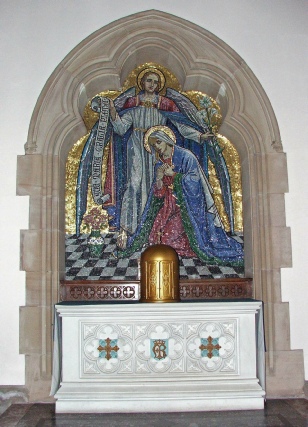
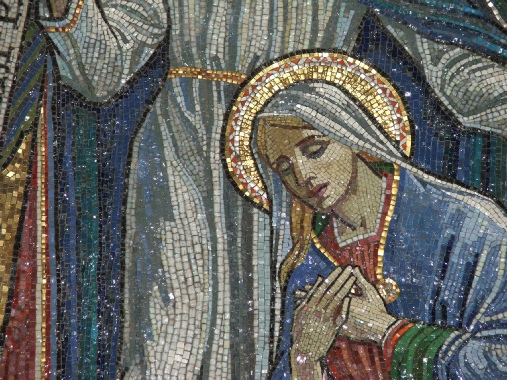
The mosaic altar, which was paid for by Oswald and his brother, H. B. Bamford. It is in the Lady Chapel. [Our own photos]
The Reverend W. Buscot conducted the memorial service and read the text, “Greater love than this no man hath, that a man lay down his life for his friend”. He said that they were gathered together that morning to pay their last respects to and pray for one who was dear to them all. He also said that Oswald’s family had asked that the others in the flock who had laid down their lives in the same cause – Patrick Moore and Sampson Smith – be associated with him both in honour and in prayer.
He went on to say that Captain Oswald Bamford was one who had the respect and esteem of them all, and the love of many, for to know him was to love him. His was a character conspicuously genuine, open, straightforward and generous. It was also marked by loyalty – to God, the Church and his King and Country.
Oswald’s Colonel was reported to have said of Oswald that he was a “brave and plucky officer who did his job very well”.
He approached Holy Communion regularly and frequently and had had a particular love of serving Mass, both of which he did on the very morning that he met his death. Afterwards, he thanked the Chaplain for all that he had done for them and added, “You have prepared me well, and now I will go and leave the rest to God.
Reverend Buscot also told the congregation that for such a one they could not help but grieve, and he said he had the honour to share their grief, for Captain Bamford’s loss to him was both that of a loyal and devoted son and of a sincere friend He also told them not to grieve for him ‘as the heathen who have no hope’, but to mourn him as Christians and Catholics. He was convinced that anyone laying down his life fighting from a sense of duty and in defence of justice would find salvation. He was also convinced that any such one – no matter what his life may have been – would have the grace of contrition, even though it be like the knight of old, who, “Betwixt the saddle and the ground, He mercy sought and mercy found.” But in the case of one who had led a blameless life, who was always ready, and who had a special preparation for death, their consolation was complete for they knew that he would have Jesus as an advocate before Jesus as a judge. But they were there not to praise him, but to pray for him, that any imperfections might be washed away by the blood of the Saviour, and that through the merits of Jesus he might be purified with that awful purity that was required before the soul could pass into the dazzling presence of its God.
Reverend Buscot’s words about Oswald’s having no known grave give an idea of the attitude held my many to the increasing number of missing and also the loss of their young men:
“He lay buried in the land which he watered with his blood, and for whose freedom he was fighting. They did not know whether he lay in consecrated ground or not, but the Church, to whom no spot in the whole world was distant, blessed that grave through the symbol of the catafalque, The body of a Christian was a holy and sacred thing. It had been consecrated to God in holy baptism, it had been sealed by the Holy Ghost in confirmation, and it had been the living shrine of Jesus Christ. The Church blessed that, too, through its symbol, and incensed it, offering it as a gift to the Most High. It was a holy seed planted in the grave, which in God’s own time would spring up to immortality.
Not in vain had Captain Bamford laid down his life; for who amongst them was not better in the face of such a noble and glorious death? Who did not feel how small was that fleeting thing they called life, and how great was the eternity that lay beyond? Who did not realise more fully how grave were the responsibilities of life, and that the chief business of life was to prepare for death and eternity? Who did not almost envy such a death? And in face of so heroic an end, death seemed to lose its terrors; for death did not conquer him, but he had conquered death. He loved honour and duty more than he feared death. “O death, where is they voctory? O death, where is thy sting?”
He concluded by telling those present to teach their children and their children’s children to revere and cherish the memory of one – and he associated the others with him – who had died for the honour of their race and in the sacred cause of freedom. He asked that they should never forget one of their own family who had been an honour to his family, an honour to his religion and an honour to his country – and pray for him and them, not only today, but in the days to come.
After the Absolution, the congregation sang “Out of the Depths” and the Dead March in “Saul” was them played on the organ. The service was brought to a close by the sounding of the “Last Post”.
Oswald is commemorated on the war memorial inside the church.
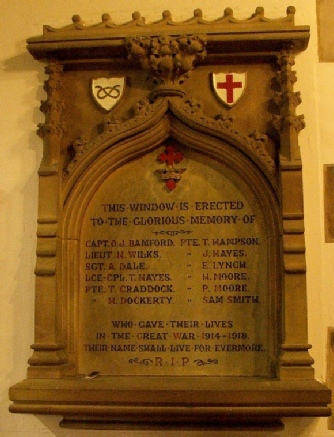
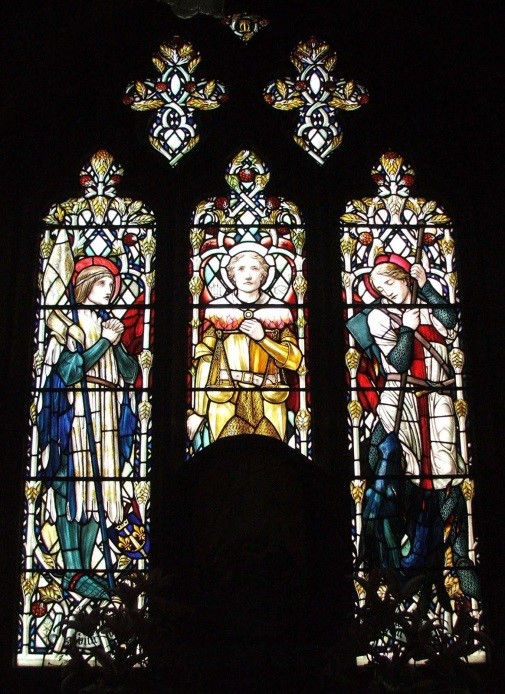
The memorial window was the work of Paul Woodroffe
In the left-hand panel of the memorial window is St. Joan of Arc, representing our French Allies.
The centre panel shows the Archangel Michael, who, according to The apocalypse, vanquished Satan. He appears in battle armour and carries the scales of Justice, symbolising the Last Judgement.
In the right-hand panel appears St. George, patron saint of England, with the dragon.
He is also commemorated on a stained-glass window of his own in south aisle of the church. It was erected by his wife, Daisy. This window was the work of Paul Woodroffe, who also created the church’s war memorial window:
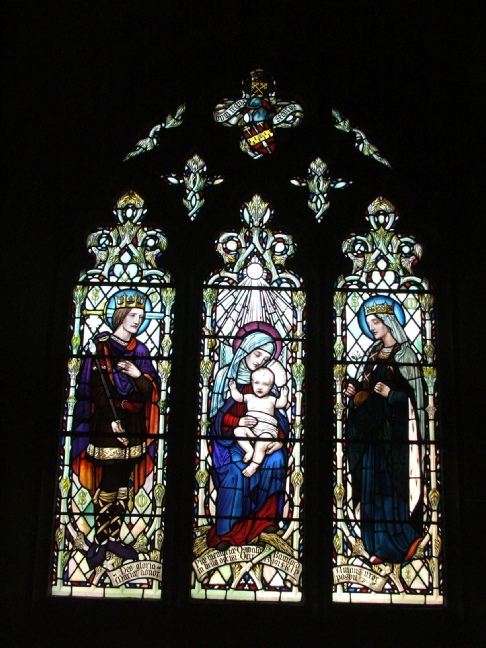
The left-hand panel depicts Oswald, King of Northumbria. The sword behind his head symbolises that he died in battle. He holds a baton topped by a right hand. This represents the story that his hand remained incorrupt after his death because he had used it to give food to a starving man.
The centre panel shows St. Mary.
The right-hand panel shows St. Margaret of Scotland, who is upheld as an example of an ideal wife, and the inscription records the fact that the panel was donated by Oswald’s own wife. Her name was Olga Daisy Beatrice Bamford, and a single daisy appears in this panel close to St. Margaret’s figure.
St. Margaret carries loaves in her apron, symbolising her concern for the poor.
Oswald died intestate and the Letters of Administration for his estate were granted to his wife, Olga Daisy Beatrice Bamford on 13th May 1916. An extract is still kept in the Public Records Office in Kew and it shows that he left a gross estate to the value of £14085-15s-6d. This was a large sum of money in 1915.
The Uttoxeter Advertiser reported that of this sum, £13567-19s-1d was net personalty.
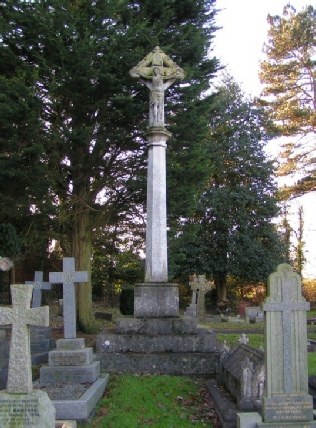
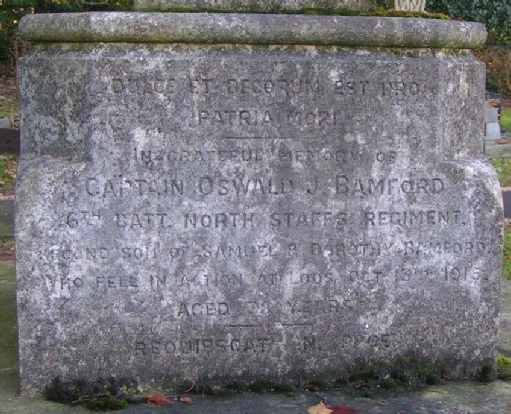
A memorial monument was erected for Oswald on the Bamford family plot in Uttoxeter Cemetery. The inscription on the base of Oswald’s monument is now very heavily weathered, but it is still possible to read it. It says the following:
DULCE ET DECORUM EST PRO
PATRIA MORI
IN GRATEFUL MEMORY OF
CAPTAIN OSWALD J. BAMFORD
6TH BATT. NORTH STAFFS REGIMENT
SECOND SON OF SAMUEL & DOROTHY BAMFORD
WHO FELL IN ACTION AT LOOS OCT. 13TH 1915
AGED 38 YEARS
REQUIESCAT IN PAGE
Oswald has no known grave, and is commemorated on Panel 103 of the Loos Memorial
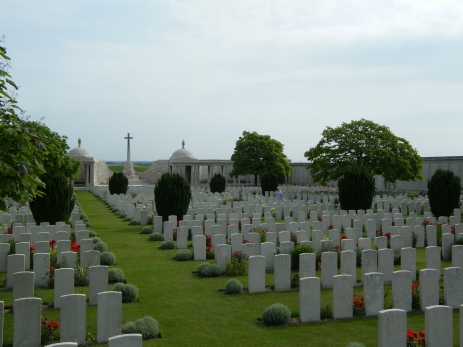
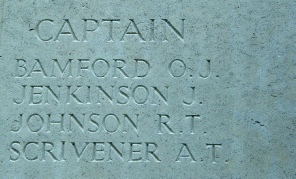
If his body was retrieved, he is most likely to have been buried in the cemetery associated with the memorial. It contains a number of graves for men of his unit who died on the same day.

Oswald was awarded the 1915 Star, the British War Medal and the Victory Medal.
















